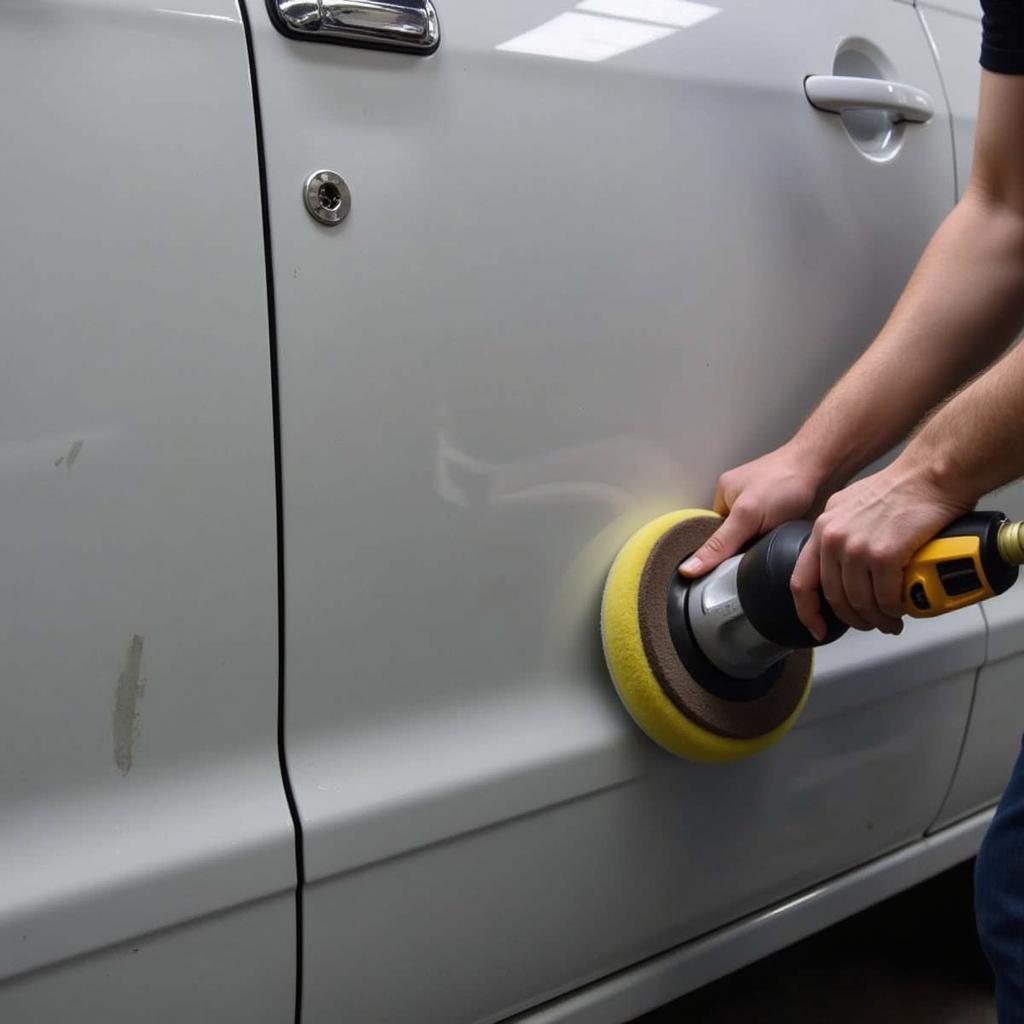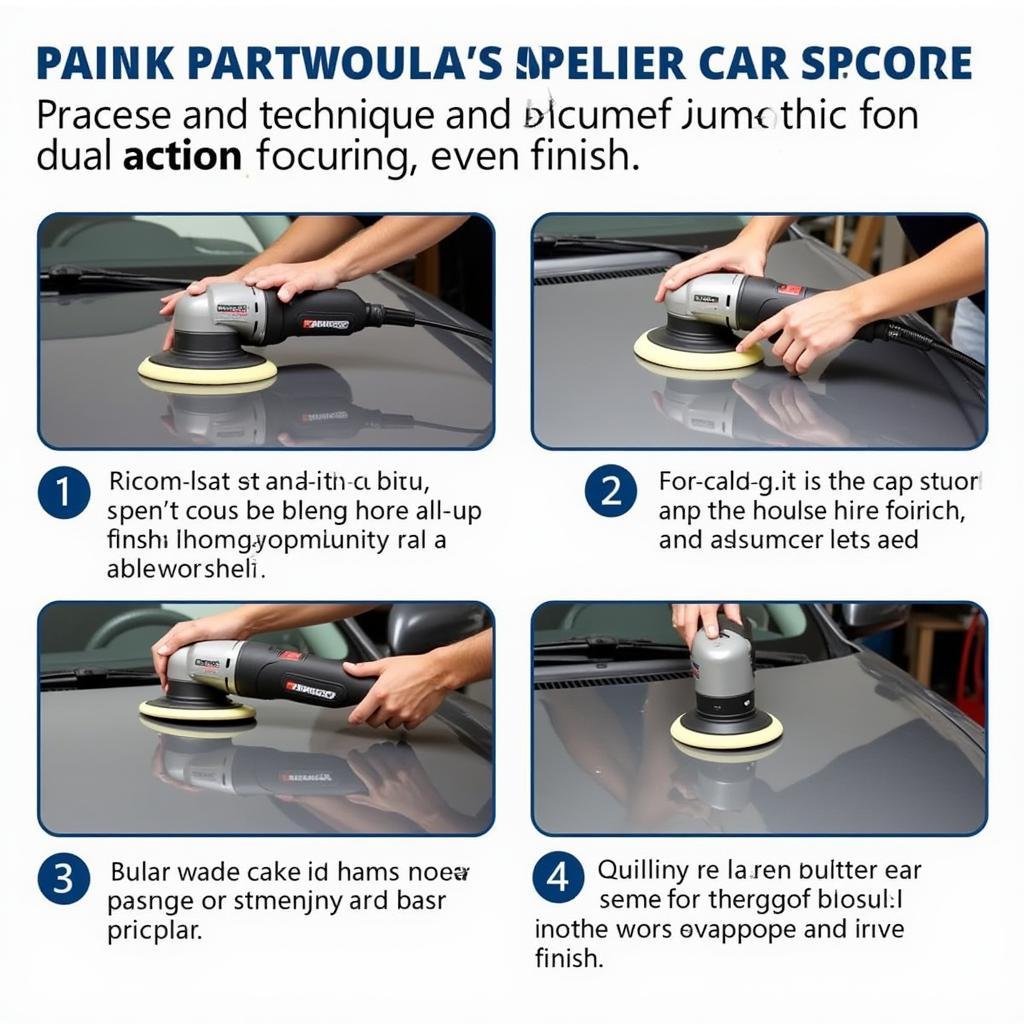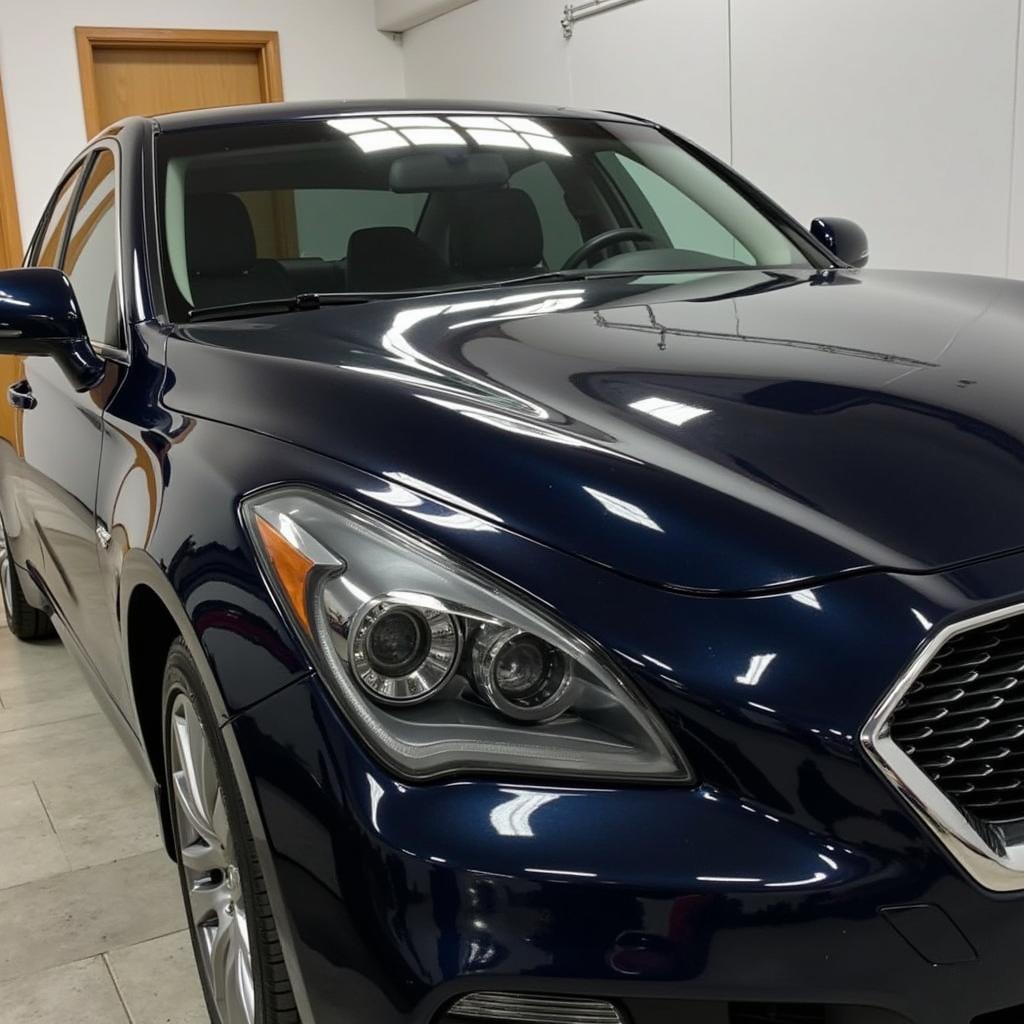Car detailing goes beyond a simple car wash. It’s about restoring and preserving a vehicle’s paintwork to its original glory, or even better. A key component in achieving that showroom shine is using the Best Compound For Car Detailing. This article will delve into the world of car detailing compounds, guiding you through the selection process, application techniques, and helping you achieve professional-level results.
Understanding Car Detailing Compounds
Car detailing compounds are abrasive pastes designed to remove imperfections from a car’s paint, such as swirl marks, scratches, oxidation, and water spots. They work by leveling the clear coat, essentially shaving off a microscopic layer to create a smooth, even surface. Choosing the right compound is crucial, as using the wrong one can damage your car’s paint.
Types of Car Detailing Compounds
There are various types of car detailing compounds, each designed for a specific purpose and level of correction. Broadly, they are categorized based on their abrasiveness:
- Heavy-Cut Compounds: These are the most aggressive compounds, designed to remove deep scratches and severe paint defects. They are ideal for heavily oxidized or neglected paintwork.
- Medium-Cut Compounds: Offering a balance between cutting power and finishing ability, medium-cut compounds are suitable for moderate scratches and swirl marks.
- Fine-Cut Compounds/Polishes: These are the least abrasive and designed for light swirl marks, minor imperfections, and enhancing gloss. They are often used after a heavier cut compound to refine the finish.
Choosing the Best Compound for Your Needs
Selecting the best compound for car detailing depends on the condition of your car’s paint. If your car has deep scratches, you’ll need a heavy-cut compound. For minor imperfections, a fine-cut polish might suffice. How do you tell which is best? Start with the least aggressive option and work your way up if needed. This minimizes the amount of clear coat removed.
 Applying Heavy-Cut Compound
Applying Heavy-Cut Compound
How to Use Car Detailing Compound
Applying car detailing compound requires the right tools and technique. Using a dual-action polisher is recommended for optimal results and minimizes the risk of burning the paint. Here’s a step-by-step guide:
- Wash and dry your car thoroughly.
- Apply a small amount of compound to the applicator pad.
- Work the compound into the paint using the polisher, overlapping each pass.
- Wipe off the residue with a clean microfiber towel.
- Inspect the area and repeat if necessary.
 Using a Dual-Action Polisher for Compound Application
Using a Dual-Action Polisher for Compound Application
Top Car Detailing Compound Brands
The market is flooded with various car detailing compounds. Research and choose reputable brands known for their quality and performance. Some popular brands to consider include Meguiar’s, 3M, Chemical Guys, and Griot’s Garage. They all have an outstanding array of products covering all of your car detailing needs. For more information on top brands, check out best car detailing product companies.
Protecting Your Paint After Compounding
After compounding, it’s essential to protect the newly polished surface. Applying a sealant or wax will create a protective barrier against the elements and help maintain the shine. This is the final step in achieving a truly flawless finish. Similar to best compund for car detailing, choosing the right protectant is key.
What compound removes swirl marks best?
A fine-cut polish is typically the best choice for removing swirl marks. These lighter compounds are designed to address minor imperfections without being too abrasive.
 Car After Compounding and Waxing
Car After Compounding and Waxing
Maintaining Your Car’s Finish
Regular washing and waxing will help preserve the results of your detailing efforts. Avoid automatic car washes, as they can introduce swirl marks. Hand washing with quality car wash soap and microfiber mitts is the best way to keep your car looking its best. Learning about car detailing best polishing compound is an excellent first step. If you want information about the best car detailing compound, check out this article. To further your knowledge on the best compound car detailing has to offer, we recommend reading this in-depth analysis.
Conclusion
Choosing the best compound for car detailing is crucial for achieving a flawless finish. By understanding the different types of compounds, proper application techniques, and following up with protection, you can restore your car’s paint to its former glory. Remember to always start with the least aggressive compound and work your way up as needed to minimize clear coat removal.
FAQ
- What is the difference between a compound and a polish? Compounds are more abrasive than polishes and designed to remove deeper imperfections. Polishes refine the finish and enhance gloss.
- Can I use a compound by hand? While possible, using a dual-action polisher is recommended for better results and to avoid burning the paint.
- How often should I compound my car? Compounding should only be done as needed to correct paint defects, typically once or twice a year.
- What should I do after compounding? Apply a sealant or wax to protect the newly polished surface.
- Can I compound my car myself? Yes, with the right tools, techniques, and patience, you can achieve professional-level results at home.
- What is the best compound for black cars? Black cars are more prone to showing swirl marks, so a fine-cut polish is often the best choice.
- How do I remove heavy scratches from my car’s paint? Heavy scratches may require a heavy-cut compound followed by a medium-cut compound and then a polish.
Need assistance? Contact us via WhatsApp: +1(641)206-8880, Email: [email protected]. We have a 24/7 customer support team.

Leave a Reply